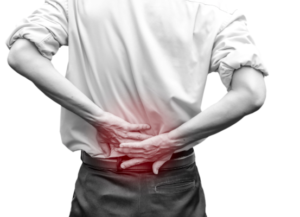Although the Social Security disability impairment listings do address back or spine conditions, it is difficult to meet or equal the criteria contained in those listings.
Additionally, some individuals have back pain that is caused by conditions that do not have a lot of objective tests available to prove their severity. For instance, many individuals suffer from osteoarthritis of the spine. And while it can be detected by imaging techniques, the amount of pain and limitation it causes often depends upon the individual. Unfortunately, the more subjective a disability determination is, the more likely it will end in a denial of disability benefits for the disability claimant.
The first impairment body system listed in the disability evaluation book “Disability Evaluation Under Social Security” is the musculoskeletal system. The first impairment listing in the musculoskeletal system section deals with major dysfunction of a joint or joints; the second involves reconstructive surgery or surgical athorodesis of major weight bearing joint; the third involves disorders of the spine; the fifth listing addresses amputation, the sixth involves fractures of the femur, tibia, pelvis, or one or more of the metatarsal bones; the seventh involves fractures of the upper extremity; and lastly the eighth listing addresses soft tissue injury.
Like all disability determinations, loss of functional ability is a major factor in approving an individual based upon back pain or any other musculoskeletal condition.
The fourth impairment listing (1.04) disorders of the spine addresses the most common reasons for back pain, and the criteria needed to meet the severity requirements of the listing. If an individual’ s back pain is due to a herniated nucleus pulposis (ruptured disc), arachnoiditis, spinal stenosis, degenerative disc disease, facet arthritis, osteoarthritis, or a vertebral fractures, this is the listing used to determine if they are able to meet or equal the criteria outlined in the impairment listing.
To meet the listing, an individual has to have one of the following:
Part A requires that an individual have a compromise of the nerve root or spinal cord along with nerve root compression that has causes limitation of motion of the spine, neuro-anatomich pain distribution, and motor loss with atrophy that involves muscle weakness or muscle weakness along with sensory and reflex loss.
If the lower spine is involved, the individual must also have positive straight-leg raising (in the sitting position or lying down). Positive in this situation means positive for pain.
Part B provides the criteria needed to meet or equal the severity of 1.04 if the individual has arachnoiditis.
Part C of the listing provides the requirements for lumbar spinal stenosis.For the purposes of our question, the criteria for part C needs to be explored further because so many disability claimants with back pain have lumbar spinal stenosis.
An individual’s spinal stenosis must result in pseudoclaudication. This is pain caused by a narrowing of the lumbar spinal canal that generally causes pain or discomfort in the feet, legs, and buttocks upon prolonged standing or walking. Individuals with pseudoclaudication might also experience numbness or weakness in their legs. Sitting or bending forward at the waist often relieves leg pain that is caused by pseudoclaudication because it decreases the pressure on the affected nerve or nerves.
Lumbar spinal stenosis must also be documented by medically acceptable imaging (i.e. CT scans, MRIs, or X-rays) and it must be evidenced by chronic non-radicualr pain and weakness that causes the individual to be unable to ambulate effectively.
For the purposes of a disability determination, “to ambulate effectively”, a person has to be able to sustain a reasonable walking pace for a distance that would allow them to complete activities of daily living. Examples of ineffective ambulation might include the inability to walk without a walker, a need for a crutch or two crutches for ambulation, or an inability to walk over rough or uneven surfaces. Additionally, individuals who are able to get around in the home without the use of assistive devices are not necessarily performing effective ambulation.
If you have questions we can help!
Source: https://www.ssdrc.com/back-pain.html


